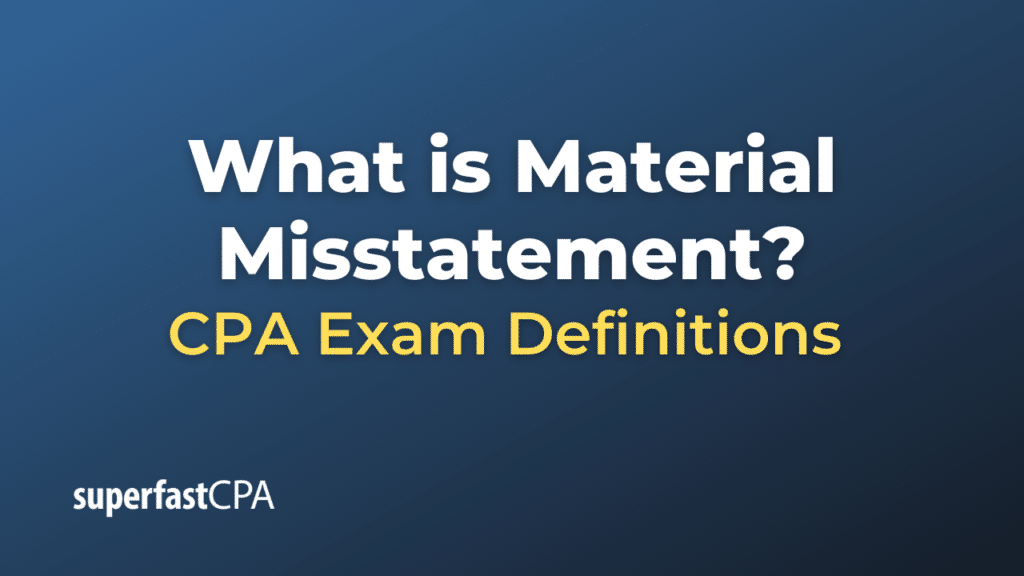Material Misstatement
A material misstatement is an error, omission, or misrepresentation in a company’s financial statements that is significant enough to impact the decisions of those relying on the financial statements, such as investors, creditors, or regulators.
A misstatement can occur in many ways, such as overstatement or understatement of revenue or expenses, inaccurate reporting of assets or liabilities, or not disclosing necessary information in the notes to the financial statements.
The concept of materiality in accounting and auditing refers to the significance of an amount, transaction, or discrepancy. What constitutes a material amount can depend on many factors, including the size of the company, the size of the misstatement in absolute terms or as a percentage of certain financial statement items, and the potential impact of the misstatement on key performance indicators, ratios, trends, or the company’s overall financial position and results of operations.
If a misstatement is deemed material, it must be corrected before the financial statements are issued. Material misstatements can lead to restatements of previously issued financial statements, regulatory scrutiny, potential legal consequences, and can damage a company’s reputation. Auditors specifically design their procedures to detect material misstatements, whether caused by error or fraud.
Example of Material Misstatement
Let’s consider an example of a company named “TechVentures Inc.”
TechVentures Inc. reports annual revenue of $5 million. However, due to an accounting error, their revenue is overstated by $500,000. This represents a 10% overstatement of revenues, a significant proportion. In this case, the $500,000 misstatement would be considered a material misstatement.
Here’s why: If investors, creditors, or other stakeholders were making decisions based on the reported revenue, this error could significantly affect those decisions. For instance, an investor might decide to buy shares in the company based on its strong revenue growth. However, if the revenue is overstated, the company might not be as financially strong or as profitable as it appears, which could lead to financial loss for the investor when this misstatement is eventually corrected and the company’s stock price potentially falls.
When the error is discovered, the company would need to correct the material misstatement by restating its financial statements for the affected period, reducing the reported revenue from $5 million to $4.5 million. The company would also need to investigate how the error occurred and take steps to ensure it doesn’t happen again. The error might also attract the attention of regulators, who could impose penalties if they find that the company was negligent in its financial reporting obligations.













